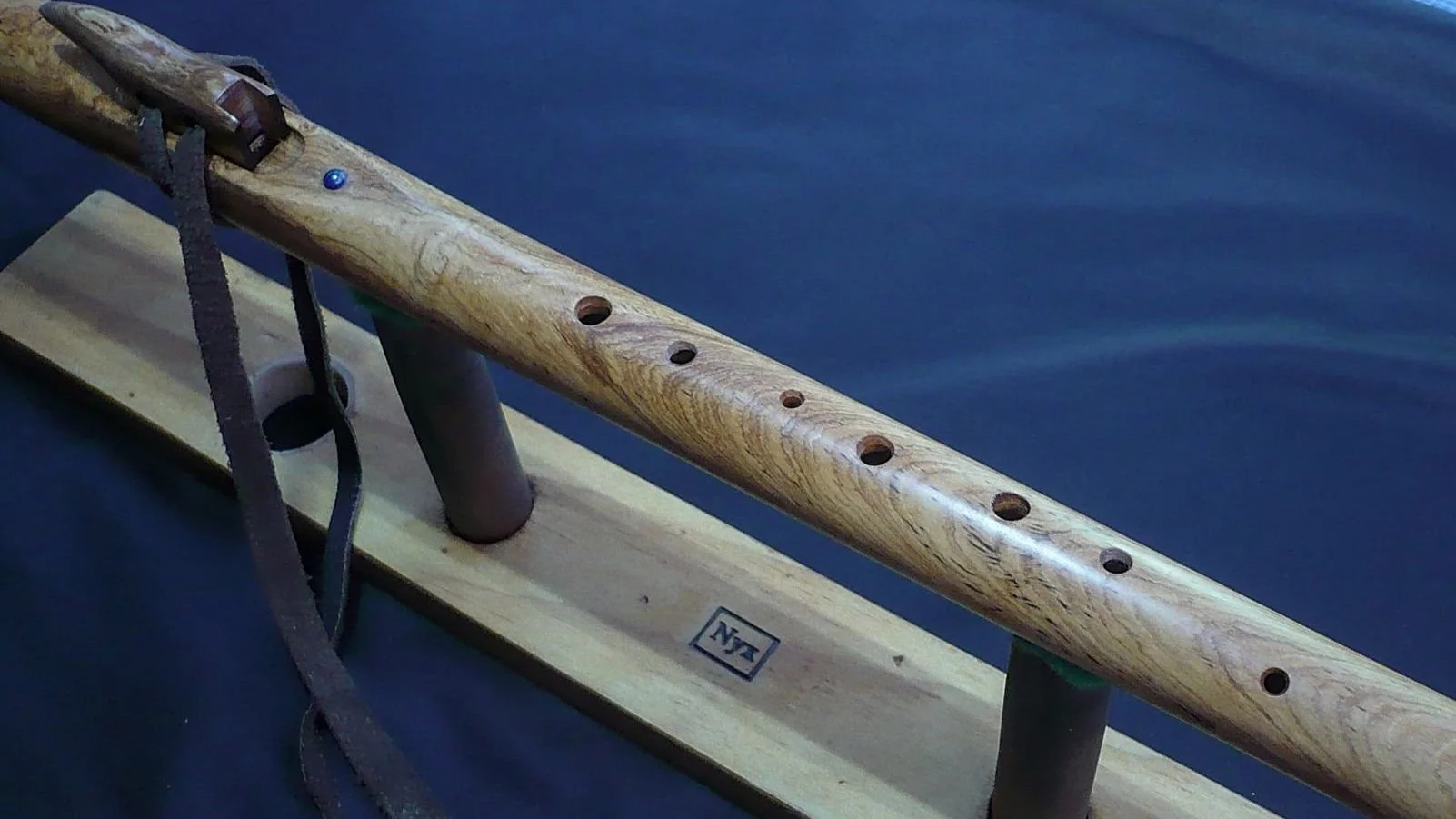In the modal mood: phrygian
In the modal mood: Phrygian, part 1
Explorations in alternate tunings (alternatives to the minor pentatonic, that is), must begin carefully.
Will we encounter the horror of nodal interference?
Will the fingering allow one to not only play in tune, but with comfortable fingering?
Not too hot, not too cold…what is the ideal register for this adventure?
And somewhere in there, the nagging: ‘Will this sound good?’ Well, Bjork thought so. Her stunning song ‘Jóga’ is based in this mode.
Originally I set out to make a small flute tuned to the sakura pentatonic. While getting the template ready Alice discovered the phrygian can be thought of as an extended sakura pentatonic. In other words, two extra tones can be added to the sakura to complete the phrygian mode. This was a exciting discovery, as here we have two discrete scales, one nested inside the other, and they are not necessarily related.
I started by calling up ‘old 5/8 faithful’, a test bed flute that has had so many holes cut, patched and cut again that it really should be retired with full medical benefits. But it never complains when I reach for it, only crying: “Once more unto the breach, dear friends …”
Extrapolating from other flutes where the holes should go, I cut a new series and brought them into tune, figuring out cross-fingerings as I went. This is part craft, part guesswork—one doesn’t expect perfection at this stage. Once completed, I made a tentative template and adjusted some of the hole positions, considering ease of fingering and hole size. Then I went ahead and cut into a really lovely blank of black maire, the hardest wood in NZ. Honey-gold, with whorls in the grain. I should have used a more modest wood, but luckily it worked out, so no tears were shed.
The fingering must be offset to easily find the lowest hole ( the flattened 2nd). I’m pleased with the pattern the holes make—they are all different sizes, and this combined with the offset produced a scattered look across the body. Thinking about the register, it’s clear that the mid-sized flutes in 5/8 bore are ideal for this scale. The largest flutes would make the fingering difficult because of that lowest hole. And in smaller flutes the holes would be crowded. So Nyx will offer it in G, A and B.
Finally, here is the sound of the phrygian flute. (The one pictured has been sold, this recording is of the second one made, a kauri flute in A.) Improvisation by Anton:



